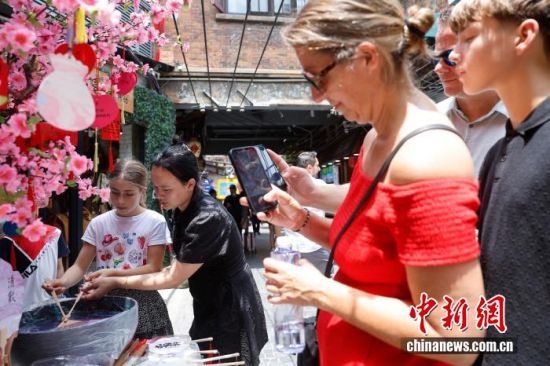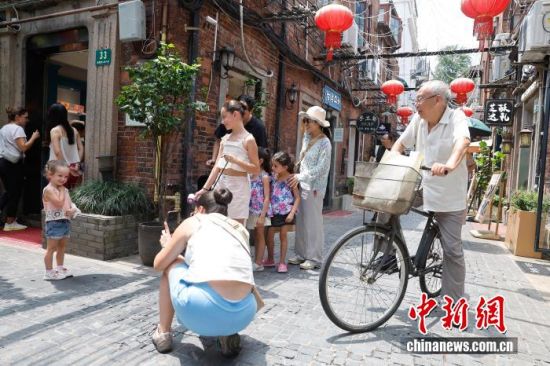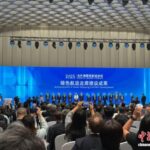How Does the Lively Atmosphere in Shikumen Alleyways Attract International Tourists?
In the deep alleys of Shanghai, Tianzifang has become a vivid example of urban renewal in China, with its unique blend of Shikumen alleyways, old factory buildings, and bustling local life. In the spring and summer of 2025, Tianzifang reached a record high of 32,000 visitors in a single day, the highest in nearly six years. As one of the core destinations for overseas tourists exploring Shanghai, Tianzifang frequently appears on international social media platforms.
Tianzifang’s popularity among international tourists is not only due to China’s transit visa exemption policy but also stems from its unique «hybrid» ecosystem. Tianzifang has not undergone large-scale demolition and reconstruction, nor has it become a standardized tourist attraction. Galleries share alley space with tailor shops, and under the clotheslines of residential buildings, there are various restaurants and cafes… Local life and global culture naturally collide in Tianzifang.

The interview summary is as follows:
Why is Tianzifang favored by overseas tourists?
Official data shows that in the first quarter of 2025, the number of inbound tourists to Shanghai reached over 1.74 million, an increase of 470,000 compared to the same period in 2024, a year-on-year growth of 37.08%. This growth trend indicates that optimized visa exemption policies have greatly stimulated the enthusiasm of overseas tourists to visit Shanghai. Among Shanghai’s many attractions, Tianzifang stands out for its «Shanghai-style flavor» and the lively atmosphere of local life and alley culture, making it particularly popular among international tourists. Even on a weekday afternoon, visitors can see foreign tourists of various skin colors taking photos and checking in.
Tianzifang was originally named «Zhicheng Lane,» built in 1930. Contemporary painter Huang Yongyu renamed it «Tianzifang» after the painter Tian Zifang from Zhuangzi, implying that this is a place where artists gather.
Today, Tianzifang spans from Taikang Road in the south to Jianguo Middle Road in the north, with Sinan Road to the east and Ruijin Second Road to the west. It covers an area of 7.2 hectares, with its core area of «three lanes and one district» spanning about 2 hectares and a business area of over 30,000 square meters. The Tianzifang block consists of Shikumen alley areas and old factory zones, reflecting the development from rural Jiangnan in modern China to a mixed community of Chinese and foreign residents and factory alley communities.
The historical evolution of Tianzifang’s spatial layout reflects the accumulation of Shanghai’s eclectic culture, embodying the inclusive nature of Shanghai-style culture. The architecture in the area is diverse, showcasing historical buildings from various periods and types in Shanghai’s development, including traditional residences, new-style alleyways, and old-style alleyways. Influenced by Western classicism, modernism, and other styles, these buildings hold significant historical, cultural, and architectural heritage value.
What sets Tianzifang apart from other tourist attractions in Shanghai is that it carries the city’s «lively atmosphere»: in a cluster of Shikumen buildings, residential alleyways, tailor shops, cafes, small restaurants, and galleries coexist. This «local-meets-global» ecosystem allows international tourists to experience the daily life of Shanghai residents.

Are there similar urban renewal cases globally comparable to Tianzifang?
If overseas tourists marvel at the miracle of Shanghai’s modern development in Lujiazui, in Tianzifang, they slow down to savor the «local flavor»—here, there are handicraft shops filled with Chinese cultural elements, as well as small restaurants and cafes offering cuisines and beverages from around the world.
Tianzifang’s unique charm comes from its distinctive «growth logic.» While most modern commercial complexes



